Chapter 11 Plant Kingdom And Environment Around Us Some Important Plants For Environment
Plant Kingdom:
All of we know is that plants have a great role in our life. We collect different ingredients from plants for our food, clothes, medicines, and household materials. Plants parts are used in industries as raw materials (like Tea, timber, etc.). Animals inhaled oxygen which comes from plants during the process of photosynthesis.
Besides some plants reduce the extent of environmental pollution by absorbing pollutants. Plants prevent soil erosion, organic manures are also made from plant parts. Plants have a great role in controlling the temperature of surroundings rainfall wind velocity. ‘
Read and Learn more WBBSE Notes For Class 8 General Science And Environment
Chapter 11 Plant Kingdom And Environment Around Us Bamboo
Bamboo
Bamboo is a common plant have no or fewer branches. Bamboos are evergreen perennial flowering plants. Bamboos like other grass (bamboo is a type of grass of the family Poaceae) have long stems whose nodes are solid and whose inter-nodes are long and hollow.
Bamboo are one the fasted growing plants in the world. Certain species of bamboo can grow 91 to 100 cm (3ft) within a 24-hour period at a rate of almost 4 cm (.1-5 inch) per hour. Giant bamboos are the largest members of the grass family.
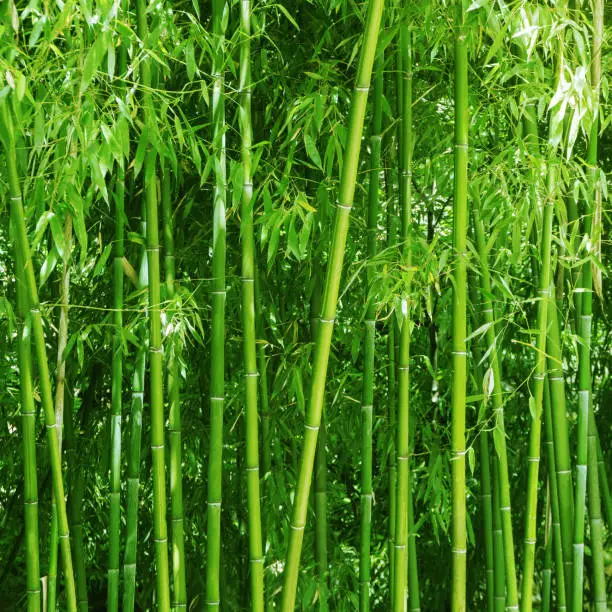
Bamboos are of notable economic and cultural significance in South Asia, South-East Asia, and East Asia, being used for building materials as a food source,s and versatile raw product. Bamboo has a higher specific compressive strength.
| Class 8 General Science | Class 8 Maths |
| Class 8 History | Class 8 Science LAQs |
| Class 8 Geography | Class 8 Science SAQs |
| Class 8 Maths | Class 8 Geography |
| Class 8 History MCQs | Class 8 History |
“WBBSE Class 8 General Science Chapter 11 notes, Plant Kingdom and Environment Around Us”
The appearance of flowers in the Bamboo plant is very irregular, in fact many flowers at intervals as long as 65 or 120 years. Bamboo plant ethereal mass flowering plant. There are different hypotheses regarding the flowering of bamboo plants. Rats and rodents like the flower.
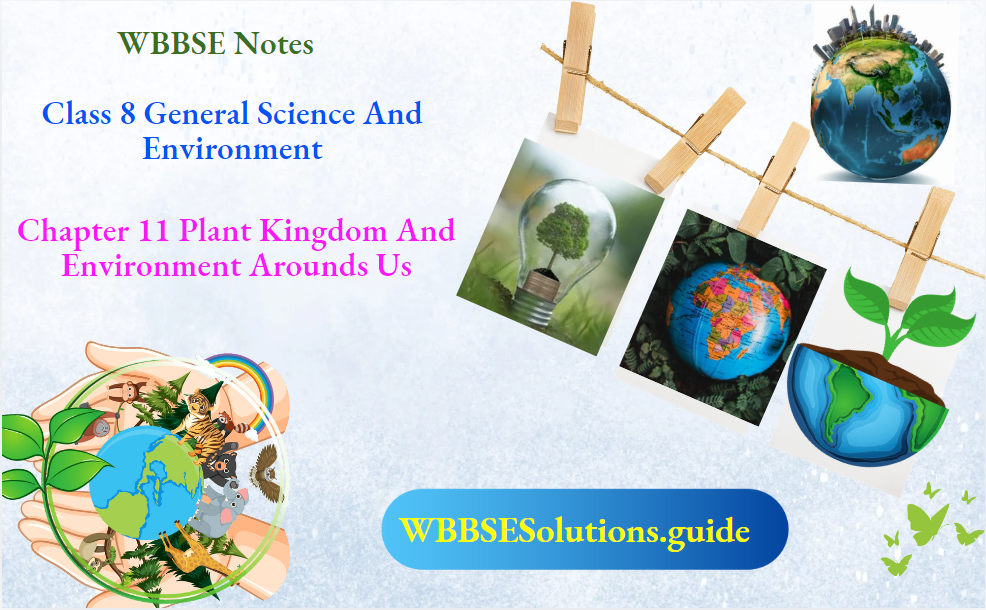
Chapter 11 Plant Kingdom And Environment Around Us Uses Of Bamboo Plants
Uses Of Bamboo Plants
- Bamboo is used as a building material. Bamboo is best known for its hard stem (culms) that are used in place of wood for a variety of applications including furniture, flats, fence posts, flooring, bridge, bamboo roofing, and handle of umbrellas in many cases.
- Bamboo is used in medicinal purposes. In China ingredients from the black bamboo shoot help to treat kidney diseases. Tabashir an important medicine for asthma, colds and cough, and many infectious diseases is made from silicon dioxide and silicic acid derived from the internode of bamboo. (Bambusa arundinacea)

- Bamboo is used to make necklaces, bracelets, earrings, and other types of ornament. Bamboo toys are used as eco-friendly material instead of plastic goods. Bamboo is a type of grass and the fastest growing plant in the world.
- Bamboo shoots are used mainly in food preparation. Bamboo leaves and shoots are the chief food of Panda another endangered species and elephants and some other animals.
- Beautiful and intricately crafted beds, chairs,s and tables are made from bamboo.
- Bamboo is used to make beer.
- Different bamboo-made utensils are used to prepare and distribute of food usually in rural areas.
- Bamboo fibers are used in fabrics and clothing, bedding made of bamboo fibers is as soft as or softer than most cotton bedding.
- Different delicious dishes are also prepared from soft young stems coming out from the base of bamboo. Different beverages are also being prepared from these young stems.
- Different weapons are made such as archery bow and arrow stick (hathi) Javline (Barsa) etc.
- A type of insect grows at the base of bamboo plants in some parts of China, Laos, Myanmar and Thailand their larva are good food of these people.

Chapter 11 Plant Kingdom And Environment Around Us Water-Hyacinth
Water-Hyacinth
Water hyacinth is an aquatic free-floating perennial plant native to the Amazon basin. This aquatic plant can grow to a height of 3 feet. Leaves are dark green, leave blades are circular to elliptical in shape. Petiole are inflated and spongy.
The water hyacinth was introduced from its native home in South America to various countries as an ornamental plant and keep cool the ponds and lakes. Water hyacinth has a negative impact on aquatic ecosystem and its propagation need to control.
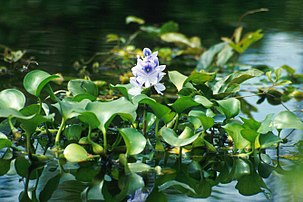
Due to its rapid reproductional ability, this plant can spread all over the .pond within a very short time. Due to the rapid growth of water hyacinths, other aquatic plants are being deprived of getting adequate sunlight and dissolved oxygen. Fishes and other animals face severe problems and succumb to death.
“Class 8 WBBSE General Science Chapter 11 notes, Plant Kingdom study material”
Aedes mosquitoes propagate in the densely grown water hyacinth plants. Besides this, a type of small snail like this plant and this snail propagate a helminth disease.
Chapter 11 Plant Kingdom And Environment Around Us Uses of Water Hyacinth
Uses of Water Hyacinth
- It ferments rapidly due to its high water content and can supply biomass for biogas production.
- This plant is used as a water-clearing agent as a substrate for mushroom production and as an ornamental species. The stems of this plant in some countries use as a source of fibers for garment industries.
- Water hyacinths are another source of raw material for the manufacturing of paper.
- As a water purifier-Water hyacinth can purify polluted dirty water by absorbing heavy metals like chromium, cadmium, nickel, cobalt, mercury, lead, etc. Therefore, the water became pollutant-free and become suitable for other work.
- Water hyacinth have the power of absorbing cyanides so it is used to treat the pollutant water of goldmine area. This plant can eliminate arsenic from arsenic-rich water.
- Nitrogen-fixing bacteria present in the root of water hyacinth play important role in nitrogen fixation by the nitrification process.
SAL :
Sal (Shorea robusta) is a large perennial, woody, deciduous dicotyledonous economically important tree. Sal is moderate to slow-growing plant and takes 25 to 30 years to be mature.

Sal attains Leaves of sal are broad and shed most of its leaves during spring. heights of 30 to 35 m and a trunk diameter of up to 2 – 2.5 m. Leaves of sal are broad and shed most of its leaves during spring.
Chapter 11 Plant Kingdom And Environment Around Us Importance Of Wood
Importance Of Wood
- Sal is one of the most important sources of hardwood timber in India.
- The wood is especially suitable for constructing frames for doors and windows, boats, floors, and many other woody structures (bridges, jetties, etc.)
- Sal tree is used in making poles (electrical) woods are resinous and durable.
Leaf:
In northern and eastern India the ury leaves of sal are a major source of the production of leaf plates and leaf bowls.
Leaves are also used for readymade food and used leaves for the food of cattle goats, cows, etc.
Gum :
Gum from the sal tree red resins in the form of gum released. From it resin is made and used in the work of wood polish and crack filler.
Resin :
Resin also used for making spirit and varnish.
Tannin :
Tannins derived from bark are used in leather industries and used as pan marshalls.
Oil :
Seed oil is extracted from seeds and used as cooking oil after refining and also used for lighting lamps, cooking, and chocolate making.
Chapter 11 Plant Kingdom And Environment Around Us Sundari
Sundari
Sundari is a type of evergreen mangrove tree. It is the dominant mangrove tree of the Sundarbans. It is a major timber-producing tree. The IUCN (International Union for Conservation of Nature and Natural resources)-has assessed this plant as being endangered.
The Sundari tree is medium size growing to a height of 15 to 25 meters. They grow in muddy places its base may wash twice by the tide. The roots are shallow and spreading and their small branches come above the soil. They bear many pores and are capable of respiration these roots are called pneumatophores.

They grow in soft soil therefore trunks develop buttresses. Some curved adventitious roots project in a curved manner from the base of the stain and penetrate in loose soil for providing mechanical strength to the plant These roots are called stilt roots.
“WBBSE Class 8 Science Chapter 11, Plant Kingdom and Environment study guide”
The trunk has a few large branches and the canopy is open. The leathery leaves (covered by waxy substances) glisten, the lower surface is light green. Pink or orange bell-shaped flower. The fruit is egg-like. New seedlings came out from the seed present within the fruit.
Uses of Sundari
- Timber produced from Sundari is hard to fine-grained tough and elastic. The heartwood is dark red or reddish brown and is used as poles, furniture, house construction, bridge building, and boat-building. These plant parts are also used as firewood.
- A high amount of tannin is produced from Sundari which is used leather and dye industries.
Chapter 11 Plant Kingdom And Environment Around Us Spices And Plants
Spices And Plants
We like tasty cooked food. Spices is the ingredient to make our cooked food tasty. Best-quality spices are found in India. Different visitors and tourists came from different parts of the world for the attraction of Indian spices.
Indian spices include a variety of spices grown across the Indian sub-continent with different climates in different parts of the country. India produces a variety of spices many of which are native to the subcontinent.
Uses of spices :
- Make the cooked food tasty.
- Use as a preservative.
- Help in digestion increasing appetite.
- Help mouth cavity / Buccal cavity) germ-free.
Table
| Plant part | Name of plant use as species |
| 1. Bark | 1. Cinnamon |
| 2. Fruit | 2. Black pepper, cardamom |
| 3. Leaves | 3. Mint, cassia (Tejpata) |
| 4. Bulbs | 4. Onion, Garlic |
| 5. Rizomes | 5. Ginger, Turmeric |
| 6. Seed | 6. Mustard, Ajowan |
| 7. Buds | 7. Clove |
| 8. Floral part | 8. Saffron |
| 9. Kernel | 9. Nut |
Chapter 11 Plant Kingdom And Environment Around Us Black Paper
Black Paper
Black pepper is a perennial flowering vine cultivated for its fruit. This is usually dried and used as a spice and seasoning. When dried the fruit is known as a peppercorn. Its unripe fruit is green when ripe became red and when dried became black. The dry fruit is used as a spice.
Usage—Beside make our cooked food tasty, potassium another mineral in black pepper helps to improve our stomach’s ability to digest food and promote intestinal health. Black pepper is used as a whole or in powder form. Its hot test is for Piperine.
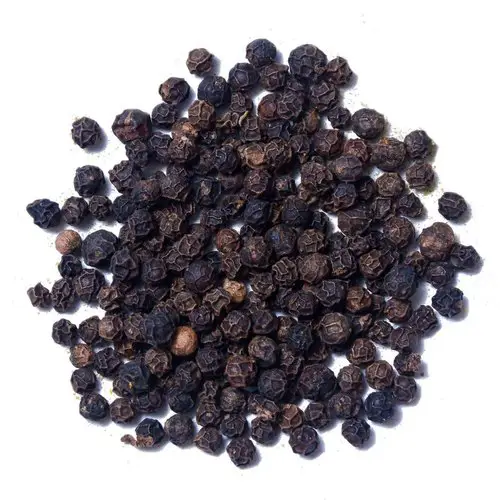
Because black pepper is a carminative it discourages intestinal gas formation and helps in the breakdown of fat cells. Black pepper is used in cough, toothache, bleeding gum, pain in gum, and indigestion.
Chapter 11 Plant Kingdom And Environment Around Us Cinnamon
Cinnamon
Hope you have seen cinnamon in some sweet in food like ‘polao’ and ‘fried rice’. Cinnamon is a spice obtained from the inner bark of the plant genus of Cinnamomum. It is an evergreen tree. The term ‘cinnamon’ also refers to its mid-brown color. Cinnamon is of two types-thick bark and thin bark.
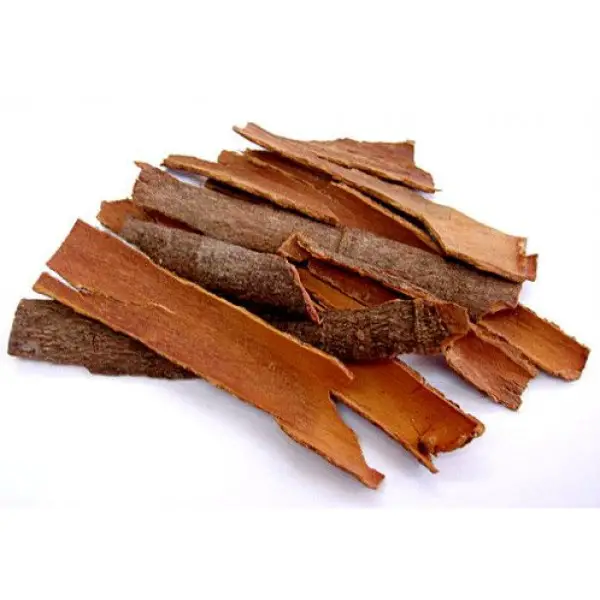 Usage :
Usage :
- Cinnamon bark is used as a spice. It is mainly used as flavoring food.
- Cinnamon has its own sweet test. It is used in small pieces or as a powder.
- Volatile oil prepared from cinnamon, its relief in arthritic pain.
- Its also use in nausea diarrhoea and colds.
Chapter 11 Plant Kingdom And Environment Around Us Turmeric
Turmeric
You will not find anyone who have not seen turmeric. Turmeric is a rhizomatous (modified stem) perennial herb. Turmeric is native to Southeast Asia. Turmeric’s aerial stem is not visible, only leaves are visible outside.
“WBBSE Class 8 Plant Kingdom notes, General Science Chapter 11”
The part use is the modified stem. Commercially turmeric is prepared from the underground yellow bulb of the plant;
The bulb (stem) of Turmeric is yellow an underground part, it may be used raw but usually, the bulb are boiled in water (for half an hour). After that, it is dried and powdered.
Usage—
Turmeric is used in most of the cooking vegetables, fish, and meat dishes. Besides, it is used for making color. Turmeric has an antibiotic role. It is used in Ayurvedic medicine. A mixture of lime and turmeric are used as medicine to relieve from bone pain due to injury.
People use it in different festivals and social occasions. Turmeric helps to prevent anemia because it reaches in iron. Research shows that turmeric is effective in controlling cholesterol level in the blood.
Chapter 11 Plant Kingdom And Environment Around Us Cardamom
Cardamom:
Cardamom is a herbaceous perennial plant in the ginger family native to Southern India. It has rigid and erect aromatic leaves which form the aerial part of the plant. It is the most common of the spices whose seeds are used as a spice called cardamom. black paper is the king of spices cardamom is the queen of spices.
“Class 8 WBBSE General Science Chapter 11, Environment Around Us easy explanation”
Cardamom is one of the world’s most expensive spices after saffron. It has a sweet burning taste and very distinct spicy odor. Cardamom is mainly of two types. Greater cardamom and lesser cardamom. Greater cardamom when dry is coppery in colour. The fruit is used as cardamom. The fruit of lesser cardamom becomes light brown when dried artificially.
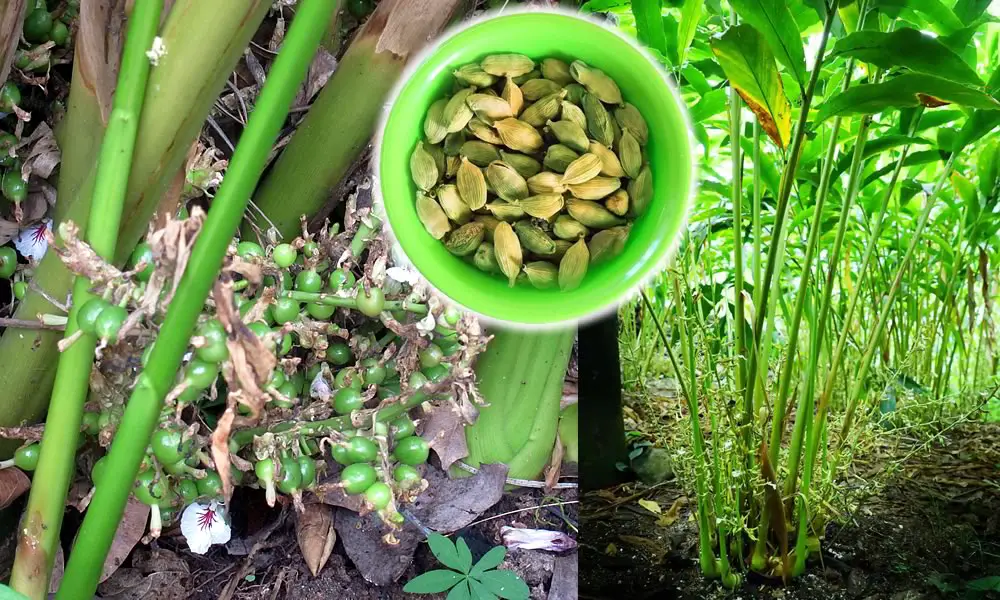
Usage—
It has a special flavor. To bring taste and special flavour of dishes cardamom is used. It is also frequently used in different sweet dishes (Payes, Halua, etc.) and also in different types of sweets.
Cardamom is used in medicine of stomach-related problems, gum related problems, used as a mouth freshener, and seeds of greater cardamom alleviate nausea. Garam masala-Garam masala is a preparation of mixing of clove, cardamom, cinnamon, black pepper mace, and nutmeg.
Chapter 11 Plant Kingdom And Environment Around Us Ginger
Ginger
Ginger is a flowering perennial herb. Stem is rhizome type (modified stem). Aerial parts like narrow green leaves and yellow flowers appear annually from the rhizome. Ginger plants have been extremely popular though out Asia especially in India from ancient times used extensively for cooking and to treat cough, cold, joint pain, etc.
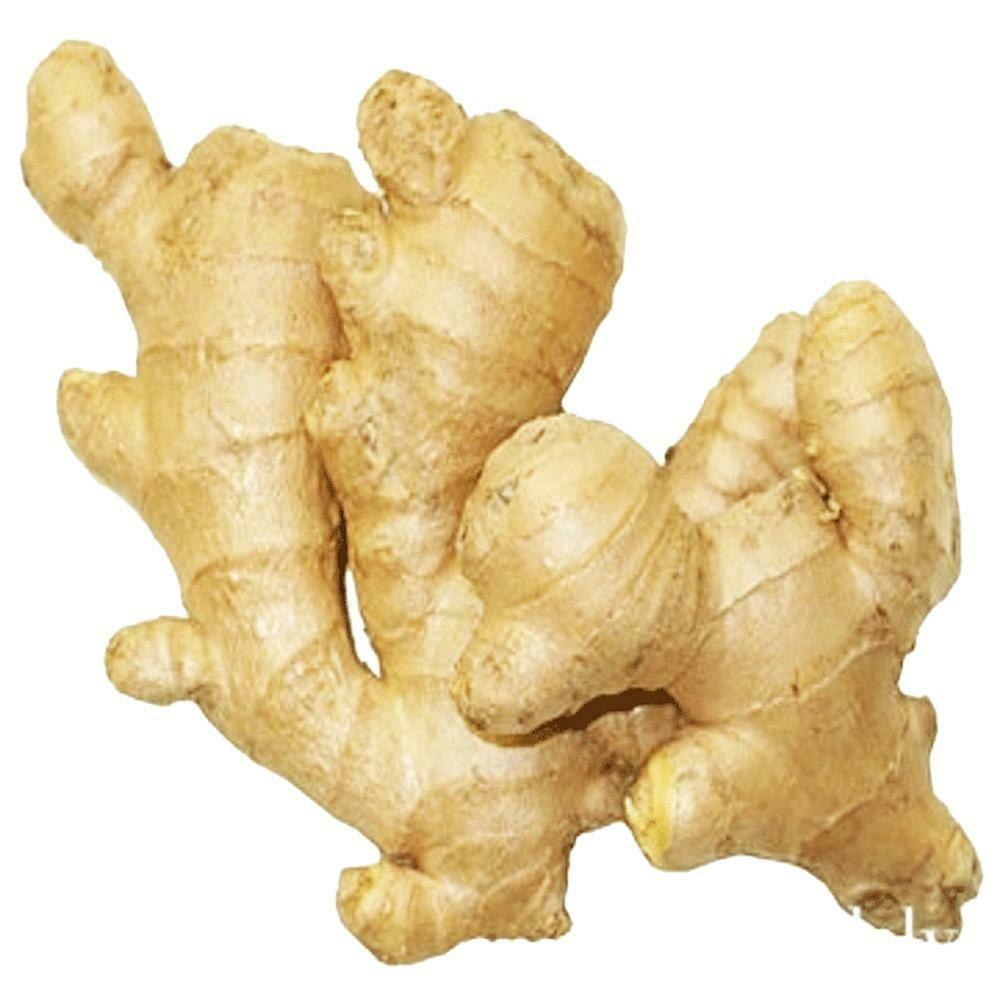
Use of Ginger :
- Ginger is widely used as a spice or a folk medicine.
- Ginger is used along with onion and garlic in different food dishes. In many cases, ginger alone are used. Ginger is also used in preparing sauces.
- Ginger has an important role in traditional ayurvedic medicine.
- Fresh as well as dried ginger is used to spice tea and coffee, especially in winter.
- Ginger is also used in the sweet candy and bakery industry, in the beer -factories.
- Ginger is useful in stomach upset it stimulates several digestive enzymes. It also helps to suppress nausea and vomiting tendencies.
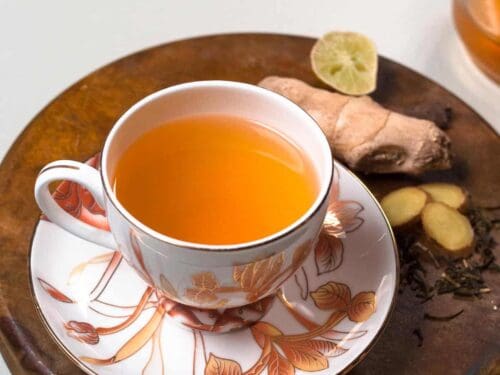
It is also used in cough syrup.
Make a table of food and other things where ginger is used :
| Food Products | Use of ginger (part) |
| Other than food as medicinal value. |
Chapter 11 Plant Kingdom And Environment Around Us Garlic
Garlic
Garlic is closely related to the onion, a perennial flowering plant. Its stem is modified bulb type (bulbous plant). A round bulb of garlic consists of 6-30 small bulb-like parts These are called grates of garlic. The whole bulb is covered by a light dry covering.
“WBBSE Class 8 Chapter 11 General Science, Plant Kingdom and Environment solutions”
Allin a sulfur-containing compound found in garlic which is mainly the compound most responsible for the “hot sensation” of raw garlic and its our. Allin is odorless when it comes to contracting with an alliinase enzyme (cut or crushed) and converting it into allicin. This is responsible for the pungent odor.
Usage: Spice: Garlic is most often used as a flavoring agent. Garlic is used with onion and ginger as a paste for the cooking of fish and meat. It is also uÿtomake tasty of some vegetable dishes. Make a jable of cooking where garlic is used as a spice.
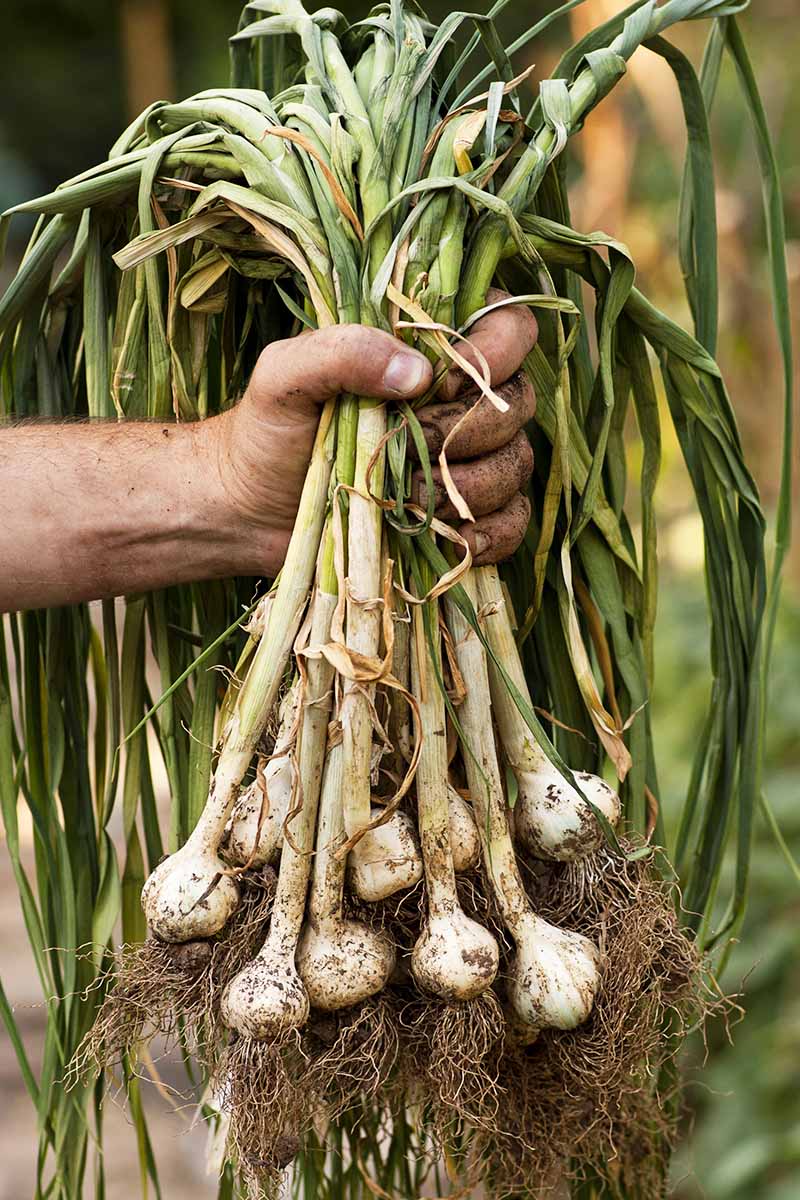
Other usages:
Garlic has medicinal food of beneficial to value the alleviation. Garlic or anti-oxidant properties of Allicin. It is also beneficial to regulate blood pressure and blood sugar.
- Garlic has also antiseptic properties. It helps to alleviate gas-related problems.
- Garlic helps in food digestion by stimulating many enzymes.
Chapter 11 Plant Kingdom And Environment Around Us Medicinal Plants
From ancient times, humans gathered knowledge about the medicinal properties of plants. India has a long tradition of using indigenous plants or plant parts as medicine.
“WBBSE Class 8 Science Chapter 11 notes, Plant Kingdom and Environment PDF”
Ayurvedic medicines have been documented in the ‘Atharva Veda’, ‘Rig Veda, and ‘Sushruta Samhita’ in our country. According to WHO (World Health Organization), nearly 80% of the world’s population depends upon traditional medicines for their primary treatment and most of them originate from some medicinal plants.
We come to know from recent studies that more than 20,000 plants have medicinal properties (it may increase in the coming days) of these 8500 plant species are only in Asia. At present nearly 3500 species of medicinal plants are found in our country.
Chapter 11 Plant Kingdom And Environment Around Us Some Common Medicinal Plants Of Out Country
Neem [Azadirachta Indica) :
Many of you have seen the Neem tree. It is a medium-sized (15 – 20 meters) first-growing evergreen tree. Neem is native to the Indian subcontinent i.e India, Bangladesh, Nepal, Pakistan, Srilanka, and Maldives. The fruit is oval to nearly roundish yellow in colour. Different parts of the neem tree i.e leaves, bark, and fruits are used for different purposes.
Chapter 11 Plant Kingdom And Environment Around Us Medicinal Properties Of Neem :
Medicinal Properties Of Neem
- The tender shoots and flowers of the neem tree are eaten as vegetables in India. In Bengal, tender neem leaves are fried with ‘Begun’ (Brinjal) called ‘nimbegun’ eaten with rice as an appetizer.
- Juice of neem leaves are used to control diabetes.
- Neem oil is used for healthy hair to improve liver function, detoxify the blood and balance blood sugar levels.
- Neem leaves are also used to treat skin diseases.
- A bitter tonic prepared from the bark of root and stem is also used in some areas as medicine of fevers, (like malaria)
- Neem oil is used in many cosmetic products such as soap, shampoo, toothpaste, powder, cream, etc.
- Neem oil is used as a pesticide.
- Neem leaves have repellent properties-insects and birds avoid it presence.
- The antibiotic properties of neem has been acknowledged.
- Besides its use in traditional, Indian medicine, the neem tree is of great importance for its anti-desertification properties and possibly as a good carbon dioxide (C02) sink.
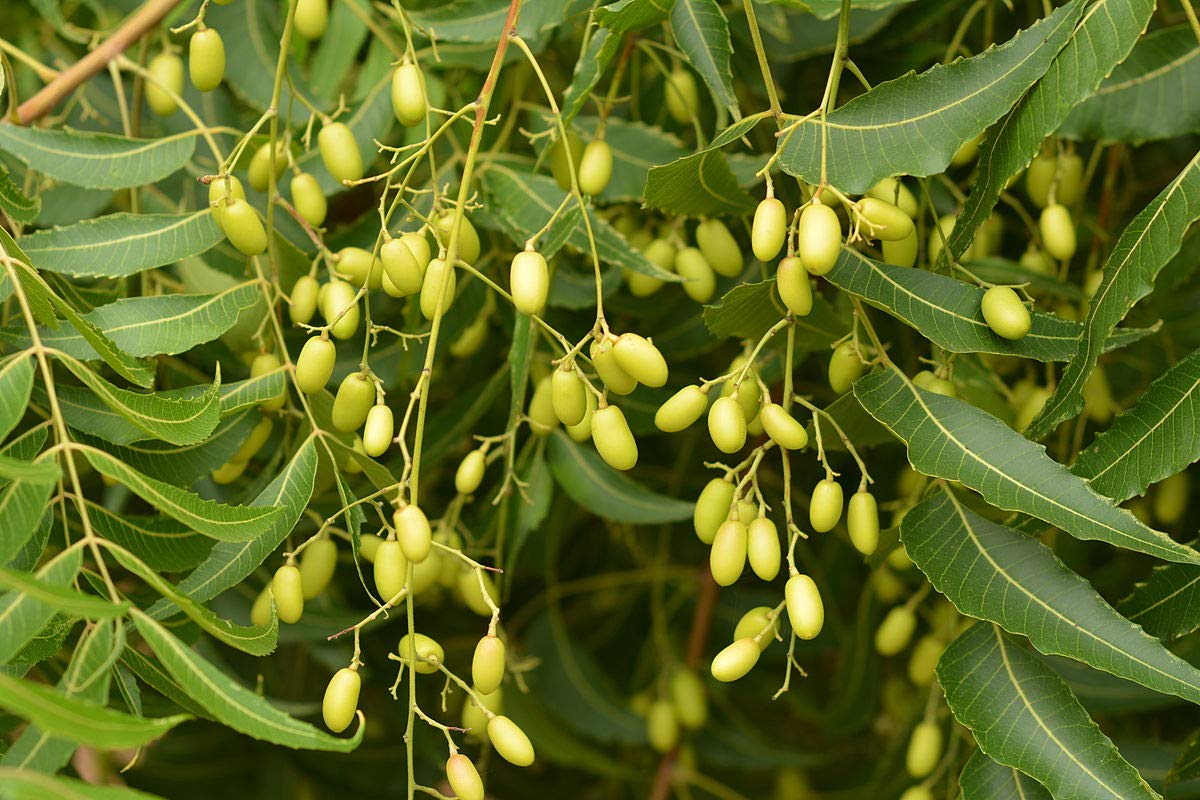
Collect neem leaves dry it keep it in your books and exercise katas. Observe the result. ‘Nimbidin’ is the main active antibacterial ingredient of neem.
Chapter 11 Plant Kingdom And Environment Around Us Bael
Bael
Bael is the most ancient sacred tree native to India. Bael is a medium-sized deciduous tree. Owing to its hard nature bael tree has wide adaptability to adverse soil and climatic condition.
“WBBSE Class 8 General Science Chapter 11, Plant Kingdom important questions”
Bael has enough medicinal value because of the presence of various alkaloids (nitrogenous excretory products of plant) polysaccharides and essential oil. It also contains mucilage and pectin.
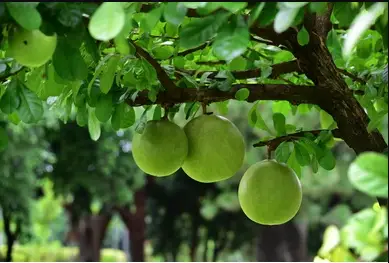
Chapter 11 Plant Kingdom And Environment Around Us Medicinal properties
- The juice of the fruit gives comfort from constipation and dyspepsia. This is also used against viral and intestinal parasites.
- Unripe or partly unripe fruit increases appetite and digestive power.
- The fruits are used to prepare squashes and cold drinks. It contains a good amount of vitamin B (riboflavin B12)
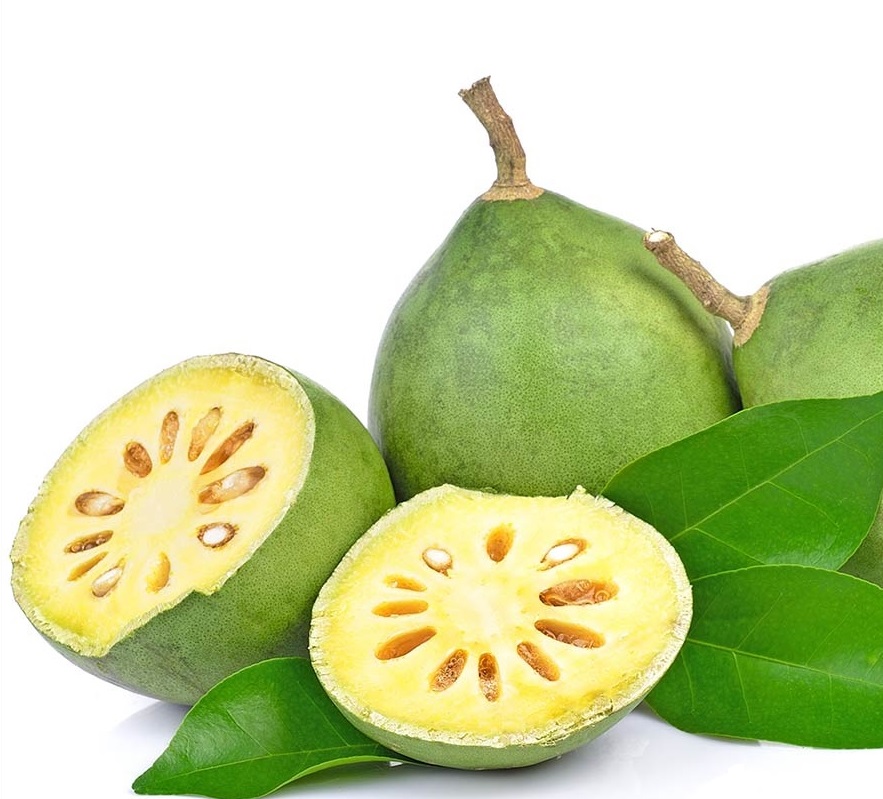
- The unripe fruits can be used to prepare sweet tasty ‘Morrabbwa’ food.
- Recent investigations have revealed the antibiotic and anti-fungal properties of beal leaves.
- Its leaves contain an alkaloid (rotation) which is useful in treating high blood pressure and diabetes. Oil extracts from bael also use to resist cold.
Benefits of Bael fruit
- Control cholesterol
- Relive constipation
- Antimicrobial properties
- Anti-inflammatory property
- Reduce skin rash.
- Control diabetes
- Wound healing properties
Emblica (Amlaki) : (Phyllanthus emblica)
The common name Amla is a small leafy tree that grows throughout India and bears an edible fruit.
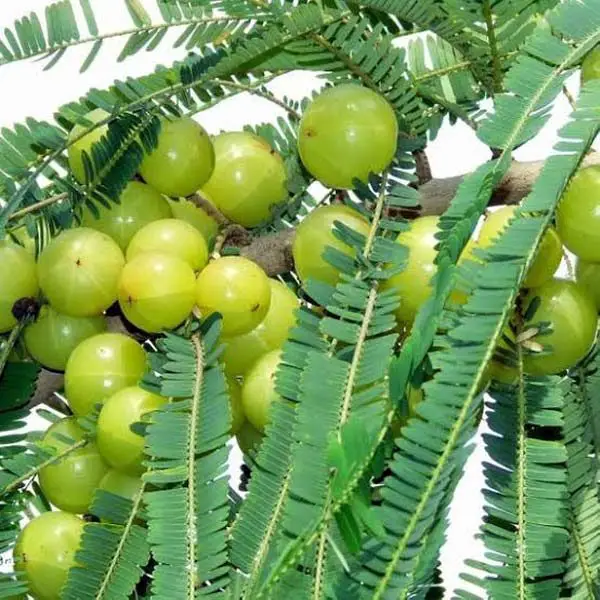
Chapter 11 Plant Kingdom And Environment Around Us Medical Properties
- Amla is very rich in vitamin C and it keeps the immune system well.
- Amlaki enhances food absorption and balances stomach acid.
- Amlaki is useful in the swelling of the gum.
- Emblica fruit works well in nausea and constipation.
Seeds of Amla is useful in asthma, and biliary disease.
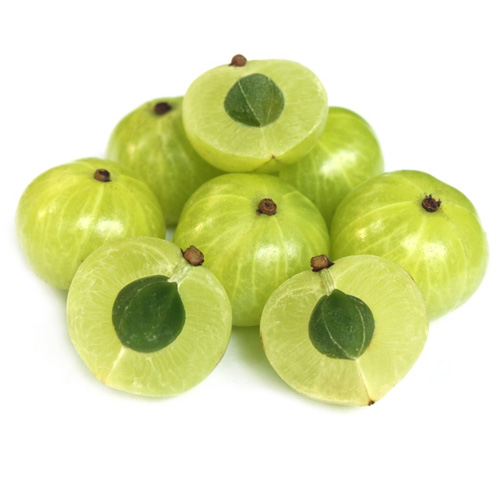 Triphala :
Triphala :
Triphala is a kind of Ayurvedic combination of ‘three fruits’ Bibhitaki (bara), Amlaki (Emblica), and (chebulic) heritage. It is primarily used to maintain a healthy digestive tract. Triphala is deeply nourishing and cleansing to all tissues and is a very effective detoxifier. Triphala also benefits for the lungs, skin, and eyes.
Chapter 11 Plant Kingdom And Environment Around Us Catharanthus
Catharanthus
Catharanthus is a tropical plant used for medical purposes mainly. Nayantara or Catharanthus is an annual herb short sighted flowering plant. The leaves are oval the flowers are white to dark pink. The species has long been cultivated for herbal medicines and as an ornamental plant.
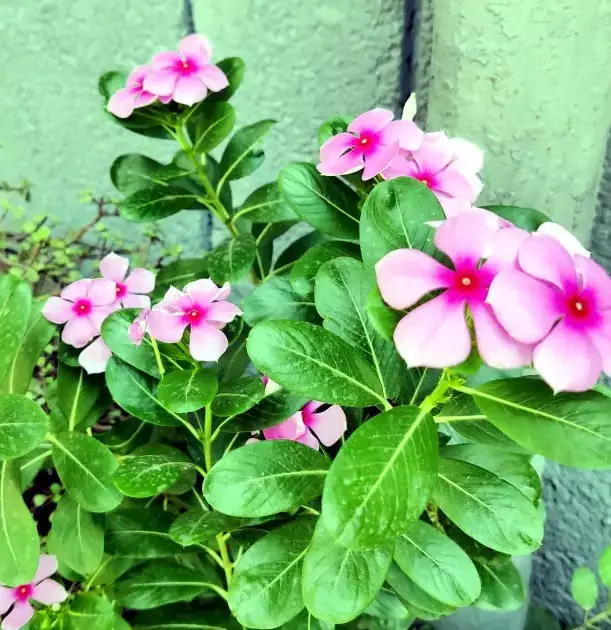
Medicinal properties :
- Its leaf is a good medicine for diabetes.
- Vinblastine and Vincristine’ are two alkaloids present in Catharanthus are now used . as chemotherapy medicine for blood cancer (leukemia) and another type of cancer (lung).
- It decreases blood pressure.
- Plant extract is useful for the treatment of dysentery and diarrhea, and having diuretic properties.
- Flower petals and seeds have antioxidant properties.
- It is also useful for the treatment of nose bleeding, and gum bleeding as well as the treatment of bleeding hemorrhoids. An alkaloid Raubasine is present in the root and helps to remove obstacles, in blood circulation mainly in the brain.
- The plant is used against insect bites.
Mint (Pydana):
Mint or pudina is also known as ‘Mentha’. It is a perennial herb.
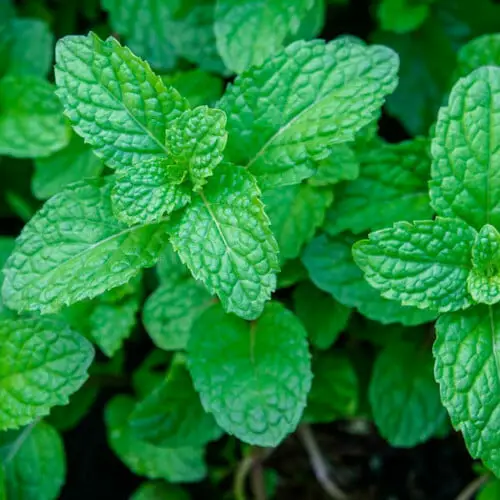
Benefits :
- Promotes digestion.
- Improve oral health.
- Quick and effective remedy for
- Nausea
- Clear congestion of nose, throat, and lungs.
- Natural stimulant relieves from fatigue and depression.
Chapter 11 Plant Kingdom And Environment Around Us Medicinal Properties
- Mint sharbat is a great appetizer and it promotes digestion and increases bile secretion.
- Mint leaves especially fresh crushed leaves help to deal with nausea and headache.
- Mint is a natural anti-microbial agent, and breath freshener.
- Mint plants contain an anti-oxidant and anti-inflammatory agent (rosmaripic acid) it is effective in relieving allergy and work as a pain reliever.
- Mint contains mental (a natural aromatic decongestant) that helps to break up phlegm and mucus and have a cooling effect that can help relieve a sore throat.
- The mint ointment is used to give relieve arthritic pain and headache.
- Pudina also used to relieve IBS (irritable bowel syndrome).
“Class 8 General Science Plant Kingdom and Environment notes, WBBSE syllabus”
Alovera (Aloe i/era) :
Alovera is a perennial herb succulent with long thick leaves that grows wild in tropical climates around the world and is cultivated for agriculture and medicinal uses. It is used in many consumer products including beverages, skin-lotion, cosmetics- or ointments for minor burns and sunburns though their permanent effects yet to be established.
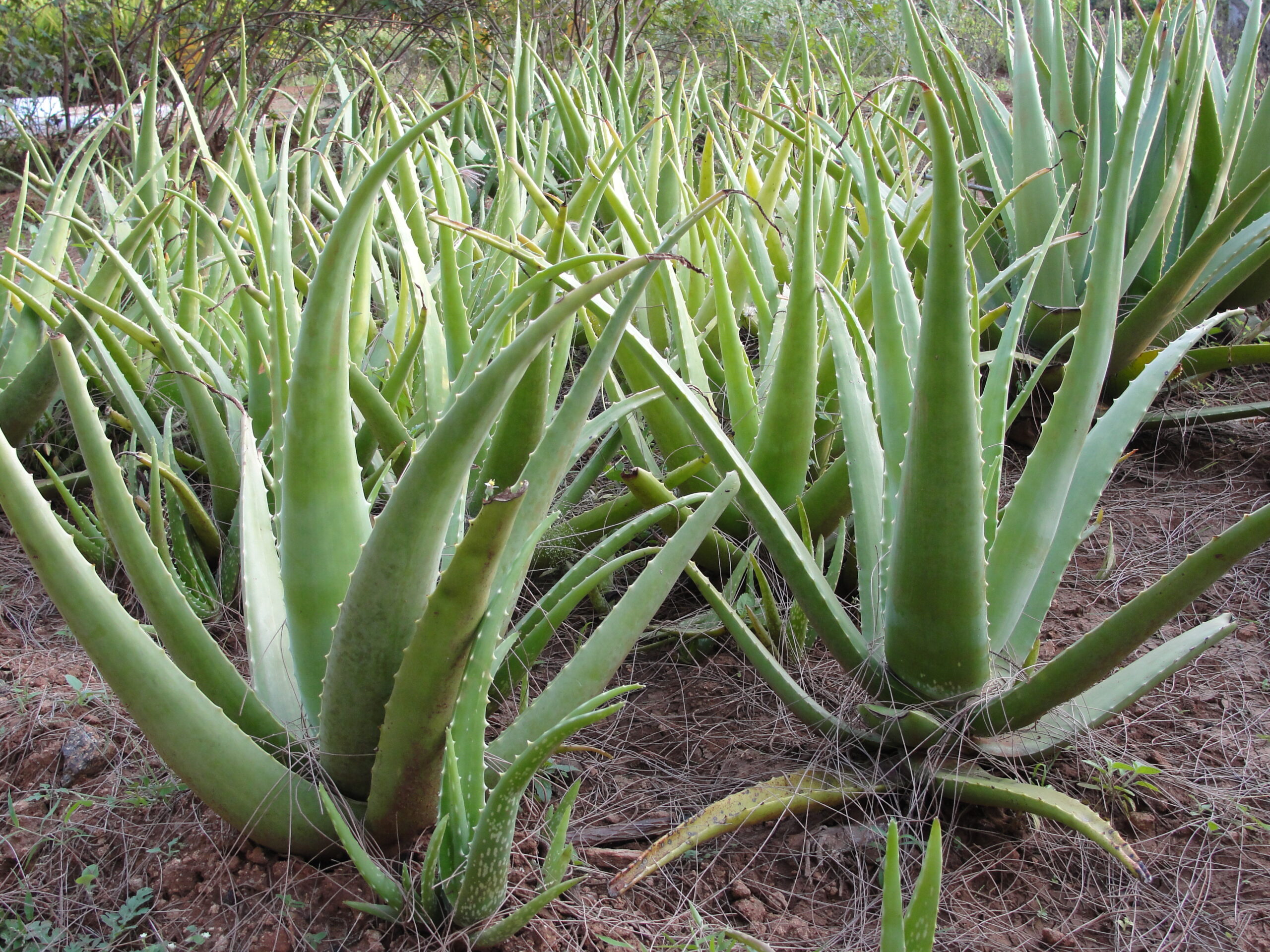
Medicinal propirties :
- Extract of aloe vera leaves contains vitamins, minerals,- amino acids, carbohydrates,s and fat. Its leaf extracts use to reduce acidity and prevent bold thickness.
- Acemannan (a complex carbohydrate) is found in aloe vera gel it them allows and nutrients at the same to reach time their live cells them of toxins. It is used in Ayurvedic medicine.
- Alovera is rich in vitamin ‘C’ and 99% water. So it is used in moistening the skin and the elasticity of the skin. These extracts increase blood and oxygen supply to the skin. Prevent skin loosening.
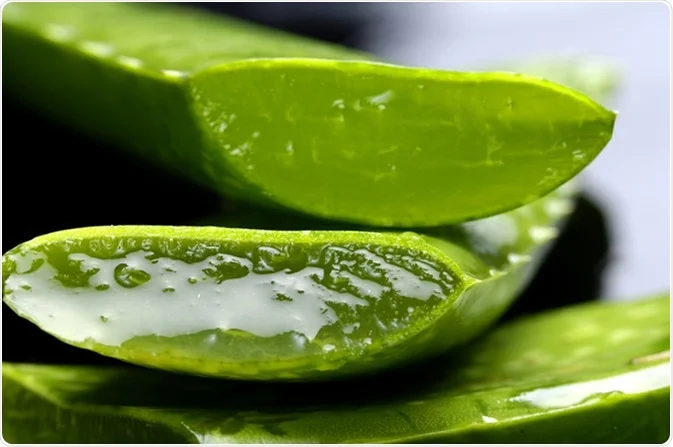
It promotes hair growth prevent itching on the scalp, reduces dandruff, and condition hair. Extract of aloe vera leaves is used to reduce stress and tension.
